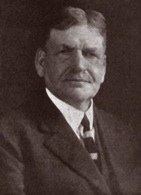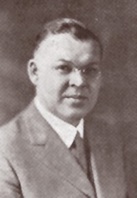UNIVERSITY ACQUIRES NEW BIRTH DATE
Regents Order "1817" Placed on Seal Instead of the "1837" Now Used
The University suffered a relapse between dawn and dark on the day of May 24, 1929—it aged perceptibly. Early in the day it was a sprightly adult of something over ninety years of age, but before nightfall the ravages of inflicted time had taken their toll and it was a doddering old man of something around one hundred and twelve.
Dr. William Mayo, celebrated Michigan alumnus, in speaking of a certain brilliant young man who was encountering difficulties in achieving the success he hoped for, is reported to have said:
"He's suffering from that disease known as youth; he'll recover from that. The only disease you don't survive is old age."
But the University of Michigan probably will recover. In fact, the medical diagnosis detailed above is hardly born out by the appearance of the patient during the week following the terrible day on, which said patient lived a total of twenty years.
To describe the illness: On May 24, 1929, the Board of Regents of the University voted to change the date on the University's seal from 1837, its present reading, to 1817. The Regents accomplished this anti-gland operation without furor and without debate. In fact, in view of all the wordy turmoil occasioned by the controversy between the anti-1837 proponents and the supporters of that date, the final denouement was a distinct disappointment. It is stated that the vote in the Board was not unanimous, but nearly so, and that the whole thing was just about as casual as action on a Sabbatical leave.
Probably the reason for this was the deluge of propaganda, which has been showered upon the hapless Regents during the verbose combat. So when there came before them a casual, routine communication from Librarian William W. Bishop, calling attention to an enclosed photostatic copy of a document in the Rare Book Room of the Library and recording the "Laws and Ordinances of the University of Michigania," the Regents seized upon the opportunity, noted that it was set forth on the documents that the date of an original incorporation was September 12, 1817, and proceeded to take action accordingly. By so doing they set up a new record for Father Time to shoot at, as well as reversing their own former decision, for on October 26 last the vote had been the other way, with the 1837 date settled upon as the one to continue on the University seal.
Those of Michigan's alumni who love to celebrate have been dealt a rather brutal blow. There's no chance now to observe—without injunction—the University's Centennial. To be sure, it may have been celebrated back during the war on September 12, 1917, but a search through the files of the local Ann Arbor newspaper, as here chronicled, (see below) fails to disclose any indication that such a celebration was of a violent nature.
The Alumni Ten-Year Program has been based on the observance of the "One Hundredth Anniversary of the founding of the University at Ann Arbor." That event seems to be safe, therefore, from the attacks of the iconoclasts.
The vote of the Regents is to be taken as a sincere—and well-merited—tribute to the work done by the National Alumni Committee on University History and Tradition. This committee, headed by William L. Jenks, 78, of Port Huron, was brought into existence at the First Triennial of University of Michigan Clubs in Detroit in 1925. It began its work immediately under Mr. Jenks and through its secretary, Judge William A. Spill, '96l, former President of the University of Michigan Club of Pasadena. A diligent investigation was prosecuted, with the result that this committee presented a report at the Second Triennial in Chicago last year setting forth the belief of its members that 1817 was the date which should appear on the University's seal.
The opinion of the committee was presented to the Board of Regents by Chairman Jenks, who made a dignified and persuasive plea for the adoption of the committee's findings. Regent Lucius L. Hubbard was directed to make an investigation for the Board, with the result that his recommendation that the 1837 date be retained on the seal was adopted last October.
But the Committee on University History and Tradition refused to be content, continuing its investigations, its compilation of data and its bombardment of the Regents.
It was more than even the Regents could stand; with the result that May 25, 1929, rolled around and the University of Michigan lost—or maybe gained—no one seems just sure—twenty perfectly good years of life.
Celebrating the University's Centennial
SEPTEMBER 12, 1917
A GREAT DAY AT ANN ARBOR
(From the files of the Ann Arbor Times-News)
-Professor Arthur L. Cross left for his home in Providence, R. I.
-Youth struck by automobile at corner of Fifth and Packard streets.
-President Harry B. Hutchins spent the day in Lansing on educational matters.
-Professor H. C. Sadler returned to Ann Arbor from a three-weeks' trip.
-Three more dogs poisoned by "veteran dog poisoners."
-Mrs. Victor C. Vaughan returned from Old Mission where she spent the summer.
-Ann Arbor city schools packed to capacity with 2,062 boys and girls, an increase of 73 over previous year.
-Born today, to Mr. and Mrs. Ray VanDoren of 1317 Wells street, a boy, weighing six pounds.
University closed—"nobody home."
The Michigan Alumnus
June 1 1929, Page 683





